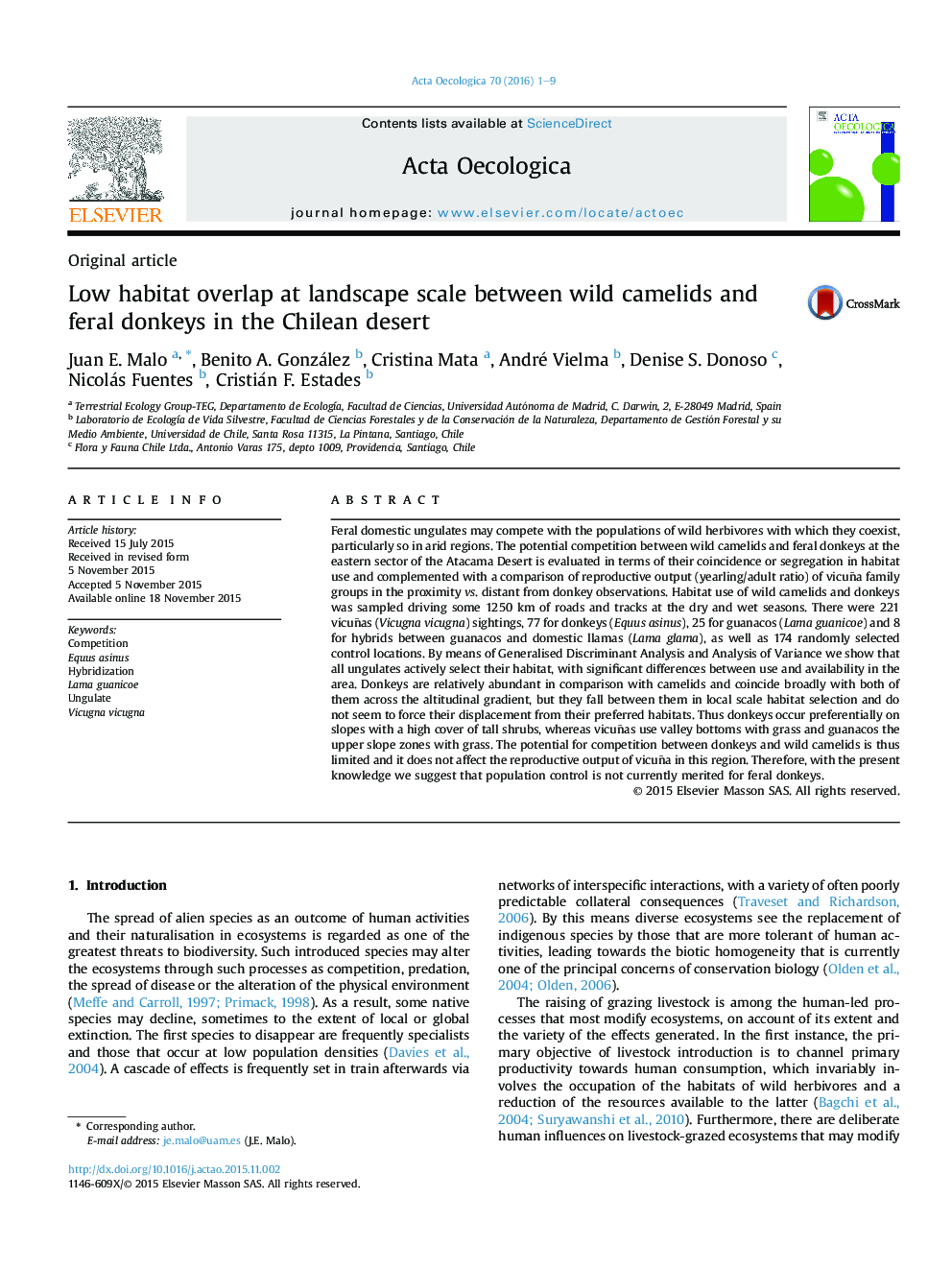| کد مقاله | کد نشریه | سال انتشار | مقاله انگلیسی | نسخه تمام متن |
|---|---|---|---|---|
| 4380794 | 1617702 | 2016 | 9 صفحه PDF | دانلود رایگان |
• Guanacos, vicuñas and donkeys coincide over most of the altitudinal gradient.
• At the landscape scale all ungulates show active habitat selection and overlap little.
• Donkeys show habitat selection intermediate between both wild camelids.
• No effects of donkeys on habitat selection or demography of vicuña are evident.
• Donkeys do not affect habitat selection of guanacos.
Feral domestic ungulates may compete with the populations of wild herbivores with which they coexist, particularly so in arid regions. The potential competition between wild camelids and feral donkeys at the eastern sector of the Atacama Desert is evaluated in terms of their coincidence or segregation in habitat use and complemented with a comparison of reproductive output (yearling/adult ratio) of vicuña family groups in the proximity vs. distant from donkey observations. Habitat use of wild camelids and donkeys was sampled driving some 1250 km of roads and tracks at the dry and wet seasons. There were 221 vicuñas (Vicugna vicugna) sightings, 77 for donkeys (Equus asinus), 25 for guanacos (Lama guanicoe) and 8 for hybrids between guanacos and domestic llamas (Lama glama), as well as 174 randomly selected control locations. By means of Generalised Discriminant Analysis and Analysis of Variance we show that all ungulates actively select their habitat, with significant differences between use and availability in the area. Donkeys are relatively abundant in comparison with camelids and coincide broadly with both of them across the altitudinal gradient, but they fall between them in local scale habitat selection and do not seem to force their displacement from their preferred habitats. Thus donkeys occur preferentially on slopes with a high cover of tall shrubs, whereas vicuñas use valley bottoms with grass and guanacos the upper slope zones with grass. The potential for competition between donkeys and wild camelids is thus limited and it does not affect the reproductive output of vicuña in this region. Therefore, with the present knowledge we suggest that population control is not currently merited for feral donkeys.
Figure optionsDownload as PowerPoint slide
Journal: Acta Oecologica - Volume 70, January 2016, Pages 1–9
